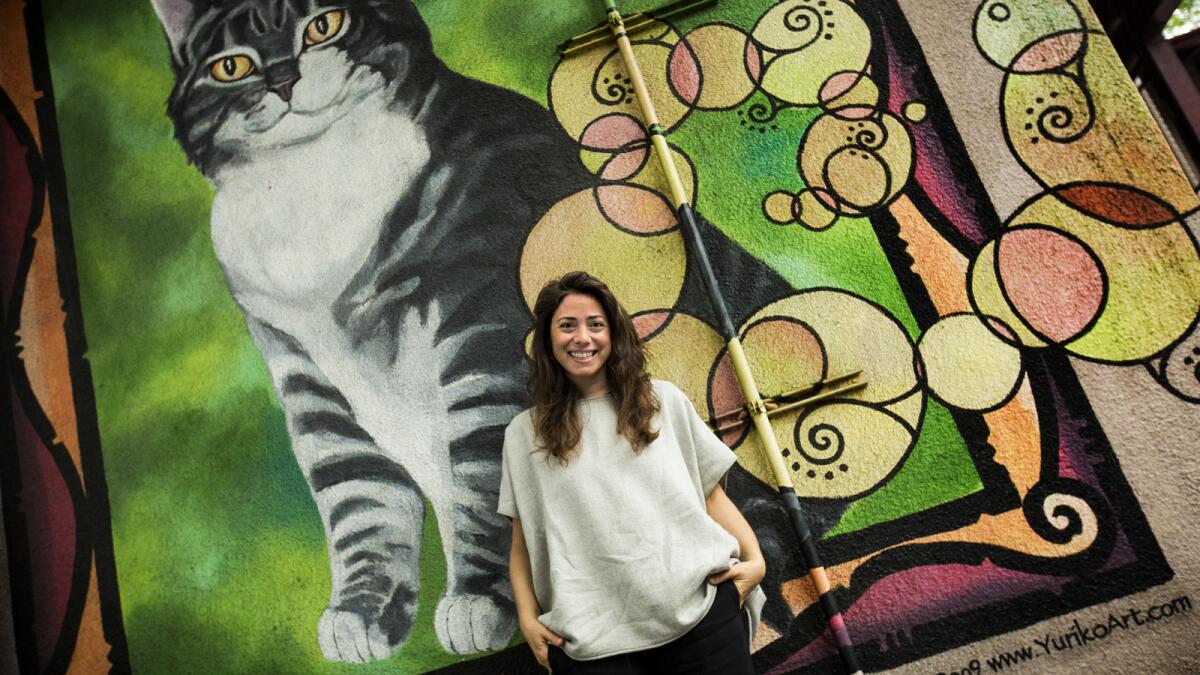The street cats of Istanbul have a hit with the documentary ‘Kedi’

“Kedi,” a documentary on the legendary street cats of Istanbul and the people who care for them, has become a surprise hit, surpassing the $570,000 mark at the North American box office in its fourth weekend of release. By week’s end, it is expected to have grossed more than $680,000.
“We were heartened and excited, though not totally surprised by the film’s successful opening,” said Dan Berger, president of distributor Oscilloscope Laboratories in an email interview. “It did exceed expectations, but our expectations were pretty lofty!”
For the record:
3:30 a.m. Nov. 8, 2024An earlier version of this story stated the that the film opened Feb. 12 in New York and Feb. 19 in Los Angeles.
An earlier version of this story incorrectly used the word “feral” to describe the cats.
Whenever filmmaker Ceyda Torun and her cinematographer, Charlie Wuppermann, told people that they were making the documentary, they always got the same response from non-die-hard feline fanatics.
“Most people’s eyes would start glazing over the moment we said, ‘Yeah, it’s cats in Istanbul,’” said Torun, who spent her first 11 years in Turkey and is now based in Los Angeles.
Even people she talked to in Istanbul didn’t know if anyone would want to see an entire movie about the thousands of cats that for several centuries have shared the Turkish city with its residents and have an almost holy reputation in the country.
But “Kedi” opened Feb. 10 in New York in just one theater and was the cat’s meow among critics, scoring 96% fresh on rottentoma
toes.com, and proving to be catnip to movie audiences, charming its way to an impressive $40,000 opening weekend and more than $60,000 for the first week in release.
The film opened Feb. 17 in Los Angeles and expands to more than 100 locations nationwide this weekend.
“Kedi” had its world premiere a year ago at the !f Istanbul Independent Film Festival. After Oscilloscope acquired the film, it continued on the festival circuit and had several word-of-mouth screenings prior to release.
“We worked hard to position the film as sort of a tonic to the current mood out there,” explained Berger. “This is 80 minutes in which you can forget about the news cycle and everything else in life and just feel good.”
Though print advertising has been fairly minimal, “Kedi” has had a strong online campaign including memes, trailers and short videos.
Torun has been thrilled with the promotion of “Kedi” because the “hardest challenge in getting the film out to the world was convincing people that there was something that they could all find significant.”

“Kedi” is the story of personable cats roaming the streets of Istanbul.
Because of her work and travel schedule, Torun doesn’t own a cat. And she didn’t have one growing up in Istanbul. “My mom and my sister are very fussy,” she noted, laughing. “So they didn’t necessarily want an animal in the house, which is what was so great about having access to these beautiful animals.”
Every March, Torun recalled, “you’d hear the really loud and crazy screams of cats mating on the rooftops and then later you’d hear the little tiny meows of the cats.”
It was when Torun started meeting the people who care for these cats that she realized “what was so significant about my relationship with cats in Istanbul was actually equally significant to these people.”
“How amazing that you have an experience in life that goes beyond social-economic confines, goes beyond age and gender, race and religious background,” Torun said. “It kind of cuts through everything and is all the more reason to explore it.”
Four years ago, Torun and Wuppermann, who together produced the film, went to Turkey to do research. “We walked the streets of Istanbul and went to the parts of town we knew. We wanted to explore restaurant cats, market cats, cats on boats, cats in a mosque, in a church, all kind of settings.”
Before they started filming in 2014, the filmmakers had leads on 35 felines. However, many of the cats were less than reliable in showing up, leading to incomplete stories. Torun and Wuppermann were ultimately able to film 19 and used seven in the documentary.
“We weren’t aggressive filmmakers in the sense that we weren’t trying to interview people who didn’t want to be interviewed and we weren’t trying to pursue cats who were very obviously not wanting to be filmed,” Torun said.
They never forced the felines to do anything. “We were very considerate of them. If they didn’t do the action, they just didn’t do it and we didn’t capture it.”
Two cameras were used to record each cat. “Both Charlie and our local cinematographer had worked together before on other projects,” said Torun. “They created this rig where they had the camera on a platform that was really close to the ground and they could still hold it while standing and walking upright.
“At some point, you endanger your well-being if you are hunched over trying to be as close to the ground as possible,” Torun noted. “So [the cinematographers] developed this kind of reverse, almost Steadicam that helped to capture those very fluid over-the-shoulder shots. It was a mix of using long lenses and getting the cats’ trust by being around them.”
And Torun also got in some snuggle time with her furry stars. “I did not hold back from petting them,” she said, laughing. “There were times when a cat would be on a staircase and I would sit next to it and pet it a little bit and then slowly move out of frame. You’d be surprised how comfortable they were with the camera.”
See the most-read stories in Entertainment this hour »
Movie Trailers
UPDATES:
March 9: 2017: This article was updated with additional information. This article was originally published Feb. 21.
More to Read
Only good movies
Get the Indie Focus newsletter, Mark Olsen's weekly guide to the world of cinema.
You may occasionally receive promotional content from the Los Angeles Times.









